Seychelles' Independence Day
Seychelles
June 29
June 29
Nationwide
Streets, squares and beaches
Streets, squares and beaches
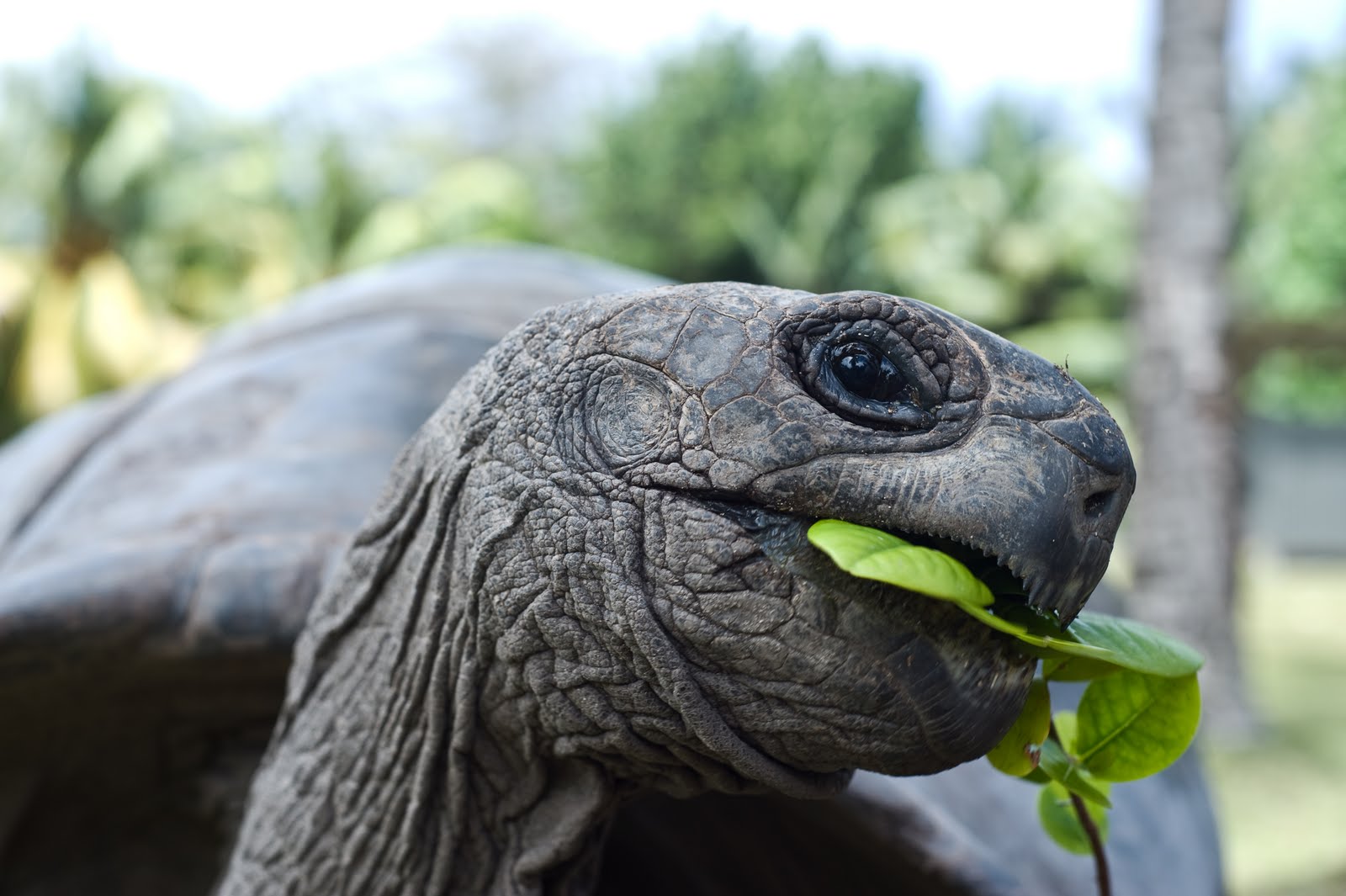
An Aldabra Giant Tortoise
The Republic of the Seychelles, an island nation located northeast of the island of Madagascar in the Indian Ocean, celebrates its independence on June 29. Independence Day commemorates the Seychelles' independence from the United Kingdom in 1976. On this day Munduslingua visits the Seychelles and explores Curieuse National Park, a park famous for the Coco de Mer palms which are a cultural icon of the islands.
The Seychelles are an archipelago of 115 islands that make a sovereign nation in the Indian Ocean. These islands are located some 1,500 km off the shores of mainland Africa, northeast of the Republic of Madagascar.
Curieuse Island, a small granitic island known for its red earth and the Coco de Mer palms that grow on it, is the home of Curieuse Marine National Park. The waters surrounding the park host an important number of marine species which are protected since the area was declared a national park.
Another notable feature of the park is its population of nearly 300 Aldabra Giant Tortoises, one of the largest tortoise species in the world, which were brought from the island of Aldabra during the 1980s. The island has also a famous museum and educational center, the Doctor's House, a place for learning about the history of Curieuse Island and its past as a former leper colony. Tours on the island include birdwatching, barbecues, walks and more.
The Seychelles are an archipelago of 115 islands that make a sovereign nation in the Indian Ocean. These islands are located some 1,500 km off the shores of mainland Africa, northeast of the Republic of Madagascar.
Curieuse Island, a small granitic island known for its red earth and the Coco de Mer palms that grow on it, is the home of Curieuse Marine National Park. The waters surrounding the park host an important number of marine species which are protected since the area was declared a national park.
Another notable feature of the park is its population of nearly 300 Aldabra Giant Tortoises, one of the largest tortoise species in the world, which were brought from the island of Aldabra during the 1980s. The island has also a famous museum and educational center, the Doctor's House, a place for learning about the history of Curieuse Island and its past as a former leper colony. Tours on the island include birdwatching, barbecues, walks and more.
Giant Tortoises of Curieuse National Park, Seychelles
Lake Titicaca
Peru
June 28
June 28
Border between Peru and Bolivia
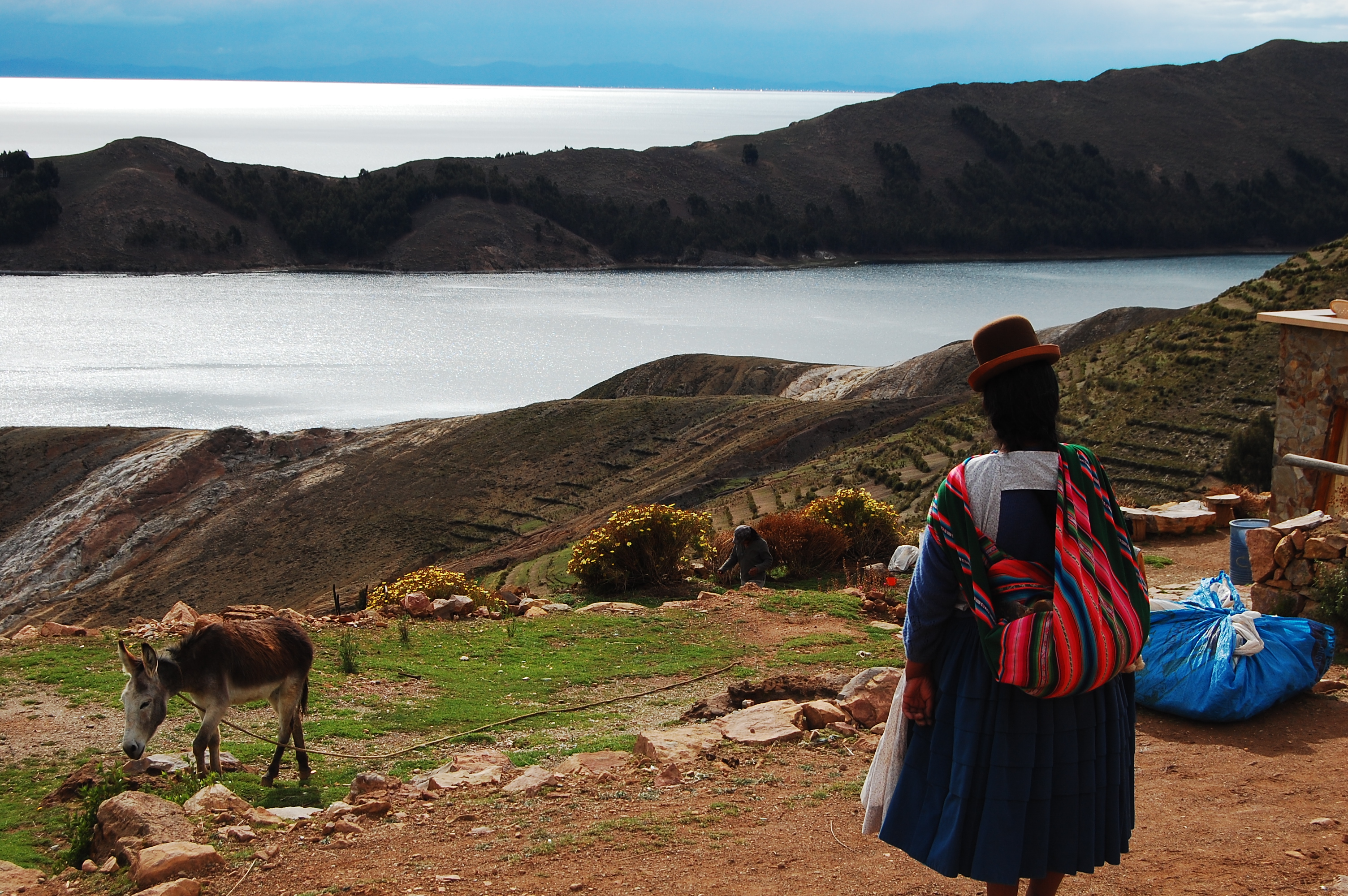
Isla del Sol, Lake Titicaca
On June 28 our journey takes us to Lake Titicaca on the border between Peru and Bolivia, to explore the "highest navigable lake
in the world" and learn why this place was sacred for the Inca civilization.
Lake Titicaca or the sacred lake of the Inca civilization (the largest civilization in South America before European arrival) is considered to be the highest navigable lake in the world. Lake Titicaca, located at 3,812 meters above sea level, is the largest freshwater lake in Latin America with over 8,170 km2.
This lake hosts an important number of animal and plant species from which ducks, fish and various kinds of aquatic plants are found. The lake includes 36 islands with the "Isla del Sol" (Island of the Sun) and the "Isla de la Luna" (Island of the Moon) being the main attractions.
The mysterious energy surrounding the lake attracts thousands of pilgrims and tourists each year. The "Isla del Sol" held once an important religious settlement, the "Pilco Kaima," a legendary building characterized by its stone walls and doors. On this island one also finds the "Fountain of Youth," a magical Inca fountain believed to hold waters that were considered the source of youthfulness. Moreover the "Chinkana," a labyrinthlike building, the remains of an Inca palace, is home to the legend that after a great flood, the Sun, a God for the Incas, visited the Earth and left a trace on its surface once it returned to the skies.
Lake Titicaca is without doubt one of South America's most cherished destinations. It is a unique place to feel the connection with nature and explore the rich Inca civilization.
Lake Titicaca or the sacred lake of the Inca civilization (the largest civilization in South America before European arrival) is considered to be the highest navigable lake in the world. Lake Titicaca, located at 3,812 meters above sea level, is the largest freshwater lake in Latin America with over 8,170 km2.
This lake hosts an important number of animal and plant species from which ducks, fish and various kinds of aquatic plants are found. The lake includes 36 islands with the "Isla del Sol" (Island of the Sun) and the "Isla de la Luna" (Island of the Moon) being the main attractions.
The mysterious energy surrounding the lake attracts thousands of pilgrims and tourists each year. The "Isla del Sol" held once an important religious settlement, the "Pilco Kaima," a legendary building characterized by its stone walls and doors. On this island one also finds the "Fountain of Youth," a magical Inca fountain believed to hold waters that were considered the source of youthfulness. Moreover the "Chinkana," a labyrinthlike building, the remains of an Inca palace, is home to the legend that after a great flood, the Sun, a God for the Incas, visited the Earth and left a trace on its surface once it returned to the skies.
Lake Titicaca is without doubt one of South America's most cherished destinations. It is a unique place to feel the connection with nature and explore the rich Inca civilization.
A trip to Lake Titicaca
Mixed Race Day
Brazil
June 27
June 27
Nationwide
Local communities
Local communities
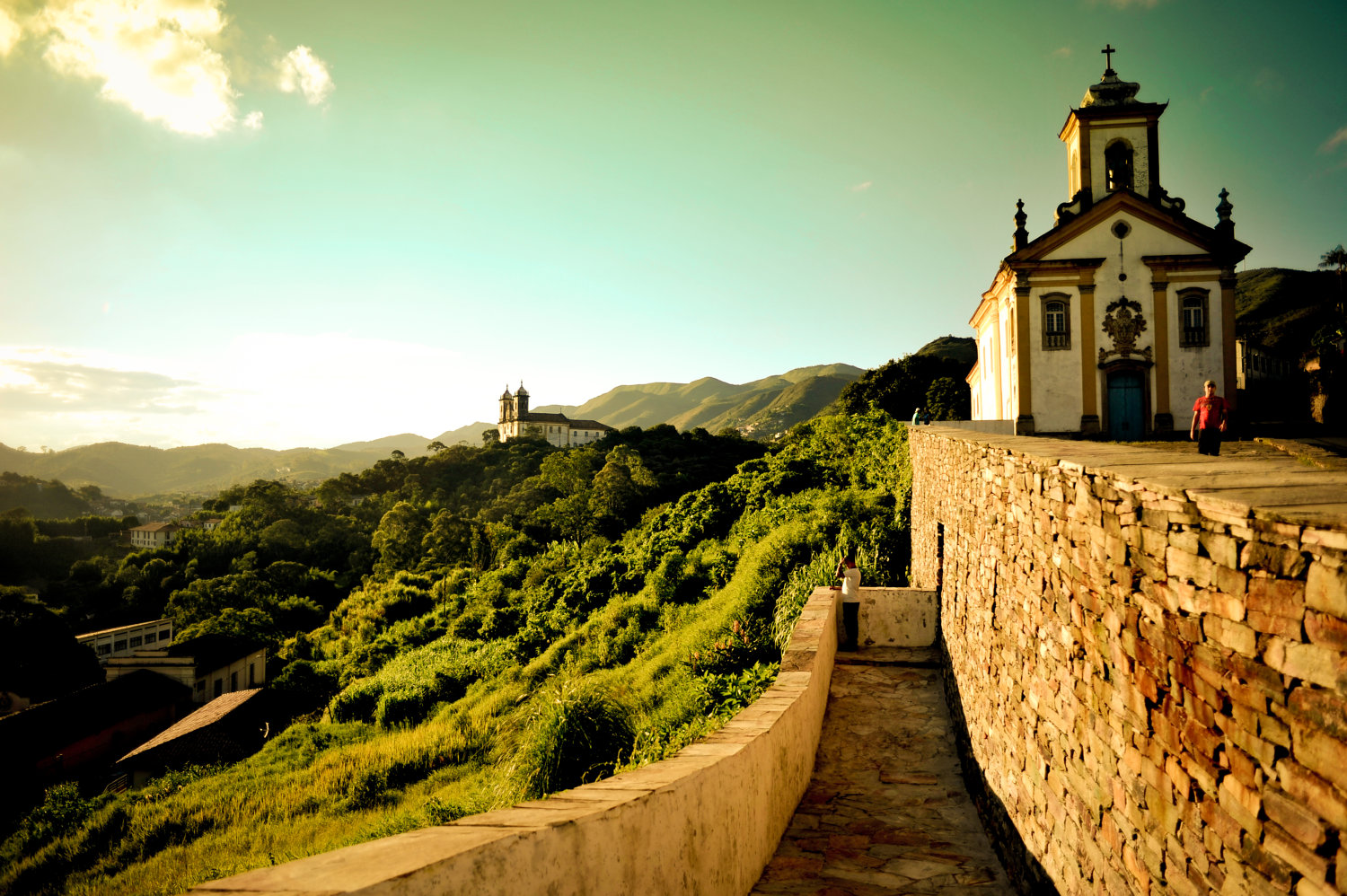
Ouro Preto, Brazil
Brazil celebrates Mixed Race Day, a holiday to honor the country's multiethnic society. This day, known in Portuguese as "O Dia do Mestiço," remembers all those who possess more than one ethnic origin and honors their role in building Brazil's national identity.
Sunthorn Phu's Birthday
Thailand
June 26
June 26
Nationwide
Local communities
Local communities
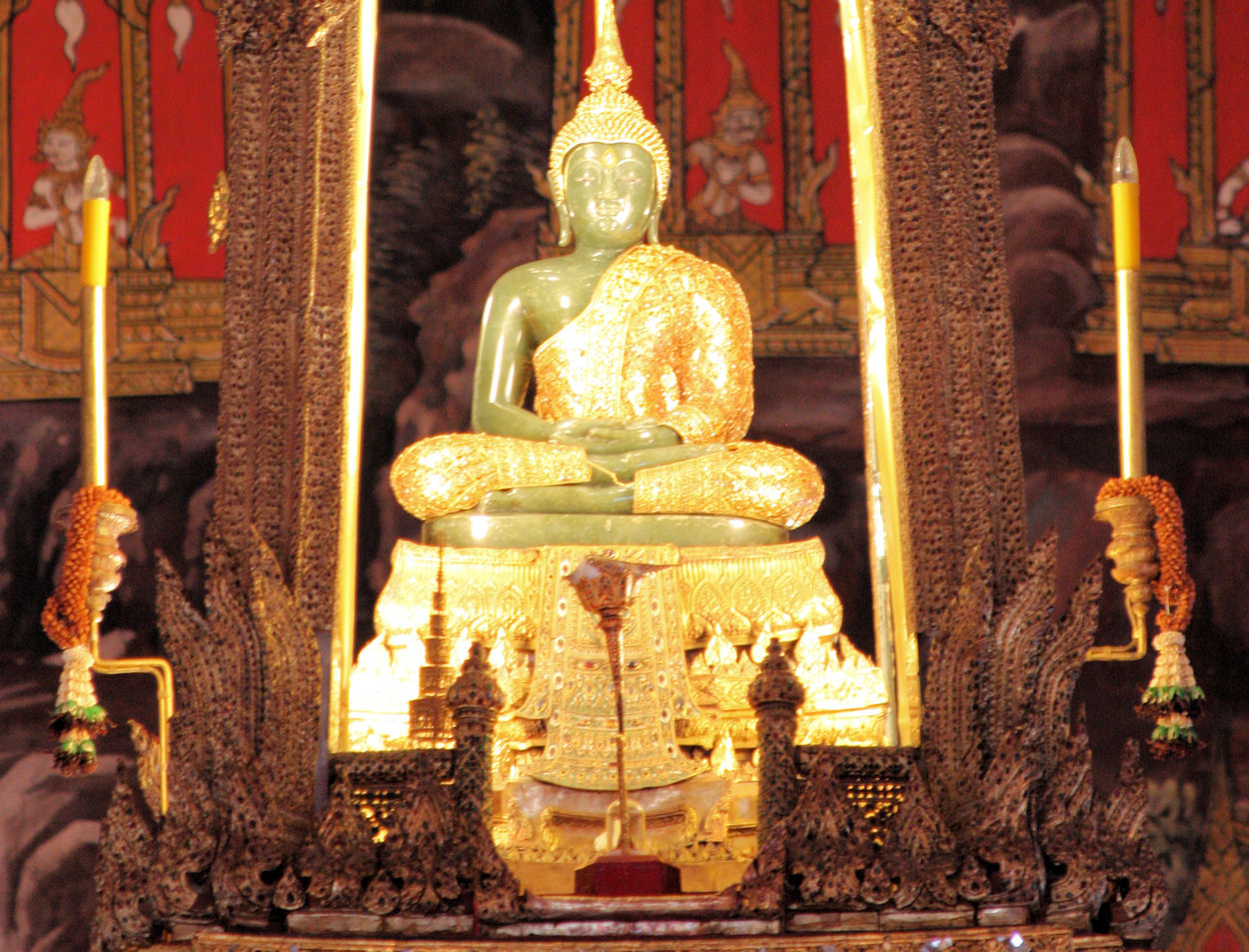
The Emeradl Buddha
Thailand commemorates on June 26 the birth of Sunthorn Phu, Thailand's most famous royal poet. Sunthorn Phu, born on 26 June 1786, left behind an important number of poems that give the reader an insight into Thailand's rich history. In 1986, during the poet's 200th birth anniversary, Sunthorn Phu was honored by UNESCO with the title of "Great World Poet." During Sunthorn Phu Day, join Munduslingua on a visit to the Temple of the Emerald Buddha, Thailand's most sacred Buddhist temple in the historic center of Bangkok.
The spectacular Temple of the Emerald Buddha is the most sacred Buddhist temple in Thailand. Located within Bangkok's Grand Palace, this temple is a part of what is known as the "outer palace," one of the three palaces that make the Grand Palace. The temple houses the cherished "Emerald Buddha," a statue of the Buddha carved in jade that dates back to the 14th century.
Within the temple complex one also finds a library, a gallery depicting past Chakri kings (kings of the Chakri dynasty which is the current ruling royal house in Thailand), and murals that illustrate the story of Ramayana (an ancient Sanskrit epic). The murals on the walls form the story of Ramayana in 178 segments that interestingly enough, if they were to be put in a straight line, would stretch for more than a mile.
Adjacent to the Grand Palace one finds yet another wonderful building, the Wat Phra Chettuphon or The Palace of the Reclining Buddha. This palace, also known for being Thailand's first public university, was founded in the 17th century and hosts the largest reclining Buddha statue in Thailand. This beautiful statue, all covered in gold leaf, is 43m long and 15m high. And in case the beauty of the buildings and statues is not enough, you can enjoy afterwards a professional massage to soothe away your aching feet.
The spectacular Temple of the Emerald Buddha is the most sacred Buddhist temple in Thailand. Located within Bangkok's Grand Palace, this temple is a part of what is known as the "outer palace," one of the three palaces that make the Grand Palace. The temple houses the cherished "Emerald Buddha," a statue of the Buddha carved in jade that dates back to the 14th century.
Within the temple complex one also finds a library, a gallery depicting past Chakri kings (kings of the Chakri dynasty which is the current ruling royal house in Thailand), and murals that illustrate the story of Ramayana (an ancient Sanskrit epic). The murals on the walls form the story of Ramayana in 178 segments that interestingly enough, if they were to be put in a straight line, would stretch for more than a mile.
Adjacent to the Grand Palace one finds yet another wonderful building, the Wat Phra Chettuphon or The Palace of the Reclining Buddha. This palace, also known for being Thailand's first public university, was founded in the 17th century and hosts the largest reclining Buddha statue in Thailand. This beautiful statue, all covered in gold leaf, is 43m long and 15m high. And in case the beauty of the buildings and statues is not enough, you can enjoy afterwards a professional massage to soothe away your aching feet.
The Bangkok Royal Temple and the Emerald Buddha
Mozambique's Independence Day
Mozambique
June 25
June 25
Nationwide
Local communities
Local communities
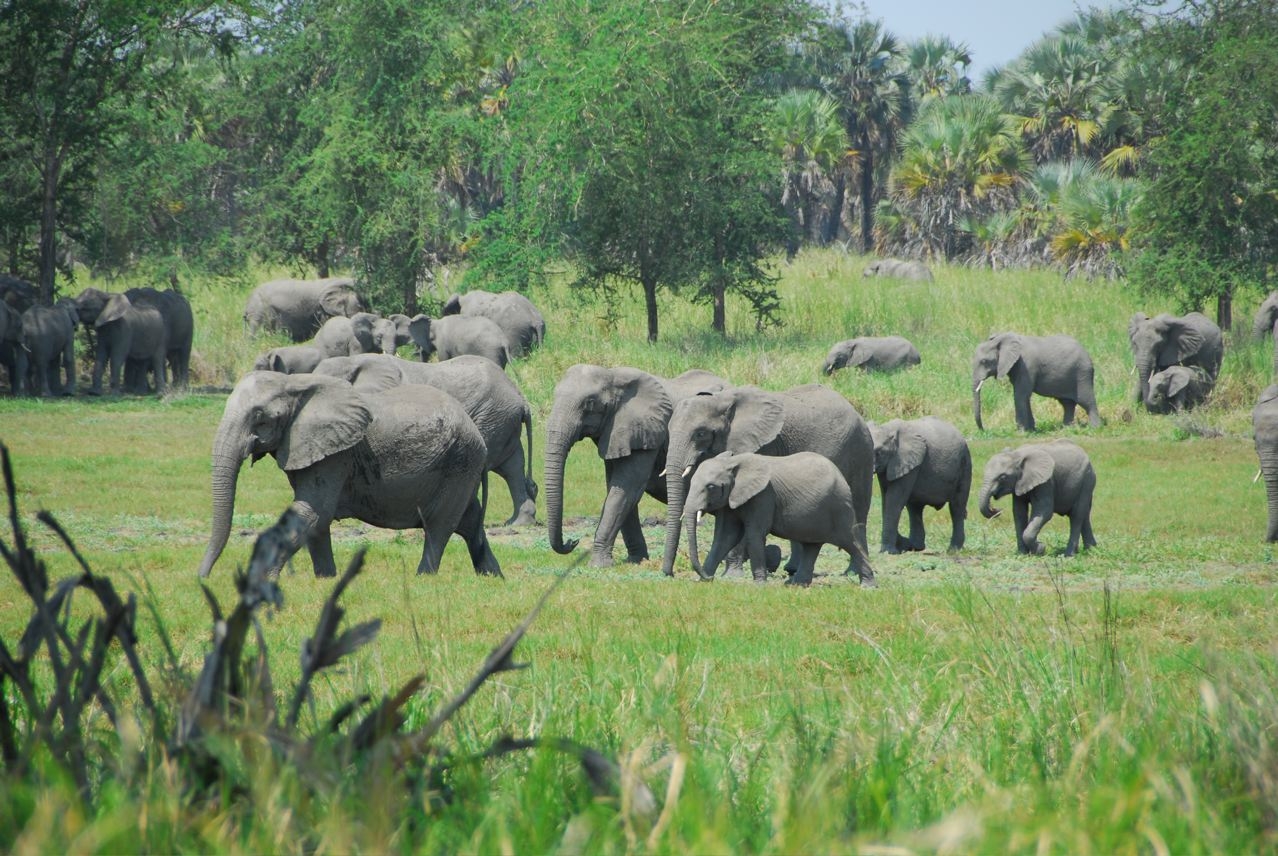
Elephants at Gorongosa National Park, Mozambique
Mozambique, a country in southeastern Africa, celebrates on June 25 its Independence Day. This national holiday remembers the day when the country achieved its independence from Portugal in 1975. On this special day for Mozambicans, Munduslingua explores Gorongosa National Park and introduces you to one of the most ambitious restoration projects ever attempted: the recovery of Africa's Lost Eden.
Gorongosa National Park, with over 4,000 square kilometers, is a park located in Central Mozambique. This protected area encompasses a wide range of ecosystems that are within Africa's most cherished. The park is also an area of unique geological value due to hosting the southern end of the Great East African Rift, one of the world's geological wonders.
The high number of unique species present in the park has deserved it the name of "the place where Noah left his Ark" after the Great Biblical Flood. This "Eden," which hosted once one of the densest wildlife populations in Africa, was critically affected by the many years of internal conflict that took place in Mozambique during the second half of the 20th century. During these years large mammals were reduced by as much as 95%, many of which were responsible for maintaining Gorongosa's ecosystems.
Nowadays, in order to bring the area back to its untamed past, one of the most ambitious restoration programs is taking place. The Gorongosa Restoration Project not only seeks to reintroduce the species that were seriously reduced, but also addresses human development by improving the lives of the people who live in the areas that surround the park.
Experience for yourself the diversity of this magnificent Mozambican park and see how an ambitious project is giving back to the area its original natural splendor.
Gorongosa National Park, with over 4,000 square kilometers, is a park located in Central Mozambique. This protected area encompasses a wide range of ecosystems that are within Africa's most cherished. The park is also an area of unique geological value due to hosting the southern end of the Great East African Rift, one of the world's geological wonders.
The high number of unique species present in the park has deserved it the name of "the place where Noah left his Ark" after the Great Biblical Flood. This "Eden," which hosted once one of the densest wildlife populations in Africa, was critically affected by the many years of internal conflict that took place in Mozambique during the second half of the 20th century. During these years large mammals were reduced by as much as 95%, many of which were responsible for maintaining Gorongosa's ecosystems.
Nowadays, in order to bring the area back to its untamed past, one of the most ambitious restoration programs is taking place. The Gorongosa Restoration Project not only seeks to reintroduce the species that were seriously reduced, but also addresses human development by improving the lives of the people who live in the areas that surround the park.
Experience for yourself the diversity of this magnificent Mozambican park and see how an ambitious project is giving back to the area its original natural splendor.
The extraordinary Gorongosa National Park
Alakbar Tagiyev
Azerbaijan
June 22
June 22
Music Composer
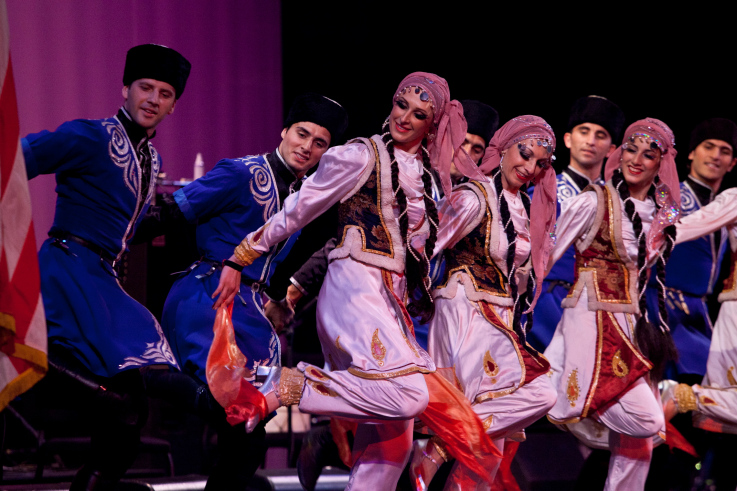
National Dance Ensemble of Azerbaijan
Munduslingua takes you on a trip to Azerbaijan to discover the life and works of the great Alakbar Tagiyev, one of Azerbaijan's most famous composers. We invite you to read a short biography and more importantly listen to one of his most celebrated works, Sen gelmez oldun (English: You did not come).
Alakbar Tagiyev (Azerbaijani: Ələkbər Tağıyev; 1922, Ganja — 1981, Baku) was a brilliant lawyer, a wonderful composer and a man with a great soul. Throughout his life, Alakbar Tagiyev dedicated himself to becoming a worthy son of his country. He managed it. His songs are now known far beyond the borders of Azerbaijan: "Arzu Qizim," "Sana Qurban," "Istayiram Goram Sani."
His "San Galmaz Oldun" (and not just this song) became an object of envy and litigation, and not only concerning Armenian claims. The fact that Alakbar Tagiyev was an excellent and competent lawyer helped him to win all lawsuits for copyright protection of all his songs. People still return to Alakbar Tagiyev's songs. It is no surprise that his songs in new arrangements are performed not only by Azerbaijani but also Russian, Turkish and Moldovan singers. And we are confident that his music will last forever. – Excerpt from article by Natalie Aleksandrova.
To end this short biography, Munduslingua invites you to listen to Sen gelmez oldun.
Alakbar Tagiyev (Azerbaijani: Ələkbər Tağıyev; 1922, Ganja — 1981, Baku) was a brilliant lawyer, a wonderful composer and a man with a great soul. Throughout his life, Alakbar Tagiyev dedicated himself to becoming a worthy son of his country. He managed it. His songs are now known far beyond the borders of Azerbaijan: "Arzu Qizim," "Sana Qurban," "Istayiram Goram Sani."
His "San Galmaz Oldun" (and not just this song) became an object of envy and litigation, and not only concerning Armenian claims. The fact that Alakbar Tagiyev was an excellent and competent lawyer helped him to win all lawsuits for copyright protection of all his songs. People still return to Alakbar Tagiyev's songs. It is no surprise that his songs in new arrangements are performed not only by Azerbaijani but also Russian, Turkish and Moldovan singers. And we are confident that his music will last forever. – Excerpt from article by Natalie Aleksandrova.
To end this short biography, Munduslingua invites you to listen to Sen gelmez oldun.
Sen gelmez oldun by Alakbar Tagiyev
La Fête de la Musique
France
June 21
June 21
Nationwide
Streets and squares
Streets and squares
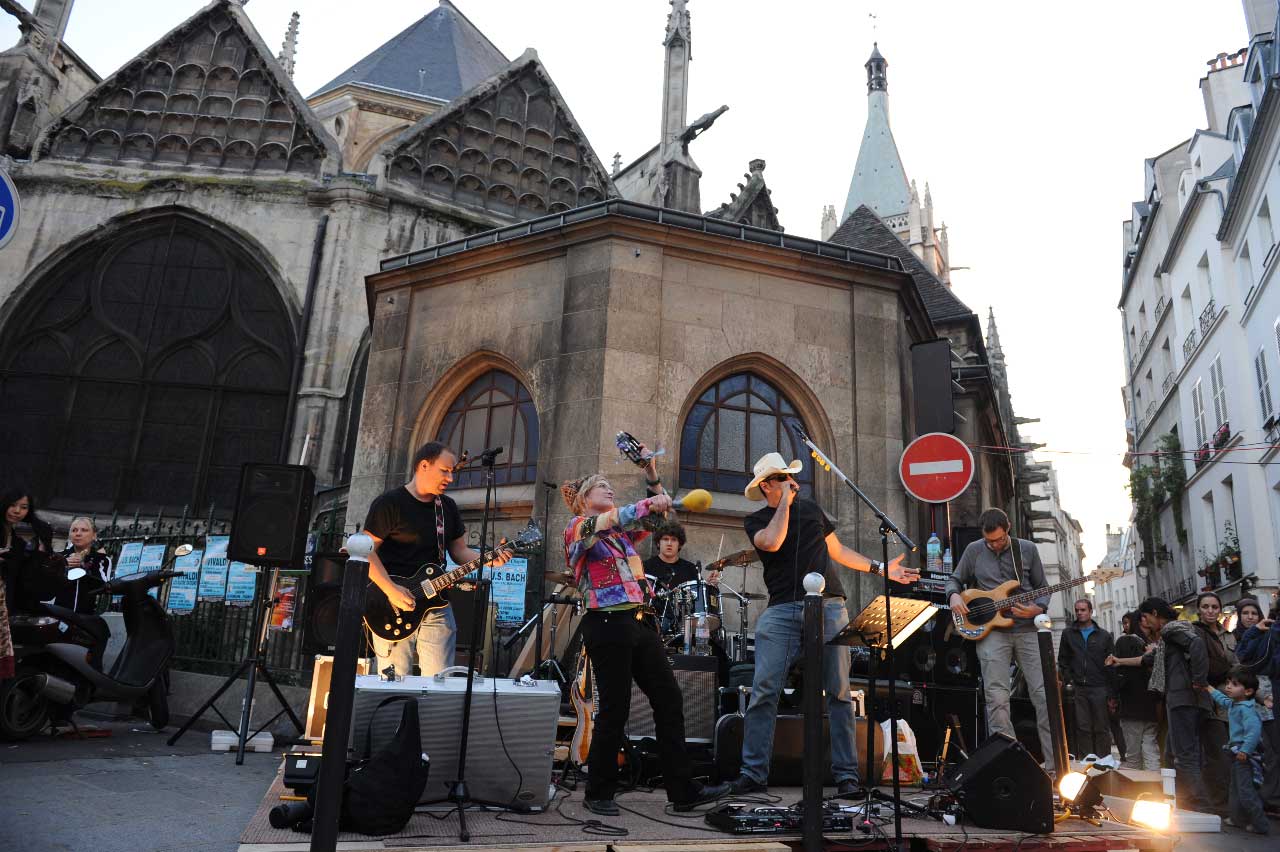
Musicians playing in the streets of Paris
France celebrates on June 21 World Music Day, a day known in French as "La Fête de la Musique." The celebrations generally fall on the first day of summer in the northern hemisphere and are widely observed in the streets and squares of most French cities.
In 1982 a study done about the cultural practices of French citizens showed that 5 million people played a musical instrument. From these one out of every two was below the age of 30. In response, Jack Lang, a French politician and Maurice Fleuret, a French composer, journalist and festival organizer, had the idea of applying the results of the research to create a special day for music.
Following the saying "the music everywhere and the concert nowhere," they both began to dream of having people go into the streets and play music. It was this way that in a matter of weeks La Fête de la Musique was launched on 21 June 1982, the day of the summer solstice when the night is the shortest in the year and most proper for holding festivities that last until the next morning.
Nowadays La Fête de la Musique has received such international attention that it has completely been internationalized. In less than 15 years the festivities have been welcomed by 110 countries all over the world with over 340 cities celebrating this event.
To end this destination, Munduslingua invites you to watch a video of La Fête de la Musique celebrations through the eyes of a person with a disability. On this day no one is excluded from the fun.
In 1982 a study done about the cultural practices of French citizens showed that 5 million people played a musical instrument. From these one out of every two was below the age of 30. In response, Jack Lang, a French politician and Maurice Fleuret, a French composer, journalist and festival organizer, had the idea of applying the results of the research to create a special day for music.
Following the saying "the music everywhere and the concert nowhere," they both began to dream of having people go into the streets and play music. It was this way that in a matter of weeks La Fête de la Musique was launched on 21 June 1982, the day of the summer solstice when the night is the shortest in the year and most proper for holding festivities that last until the next morning.
Nowadays La Fête de la Musique has received such international attention that it has completely been internationalized. In less than 15 years the festivities have been welcomed by 110 countries all over the world with over 340 cities celebrating this event.
To end this destination, Munduslingua invites you to watch a video of La Fête de la Musique celebrations through the eyes of a person with a disability. On this day no one is excluded from the fun.
La Fête de la Musique celebrations in the streets of Paris
Martyr's Day
Eritrea
June 20
June 20
Nationwide
Local communities
Local communities
Massawa, Eritrea
Eritrea, a country in the Horn of Africa and former Italian colony (1890-1941) as well as former province
of its neighboring country Ethiopia, celebrates on June 20 Martyr's Day. To understand the nature of this holiday one must
first understand that Eritrea is a country that was colonized throughout its history by several successive foreign powers.
Very often the colonizers were brutal with the Eritrean people and this led to the country's incessant struggle for independence and sovereignty. June 20 remembers all the people who died during Eritrea's fight for freedom, the martyr's of a young nation that as of 20 June 2012 has enjoyed 21 years of freedom.
Join Munduslingua on today's trip to Eritrea and discover Massawa, the Pearl of the Red Sea.
Very often the colonizers were brutal with the Eritrean people and this led to the country's incessant struggle for independence and sovereignty. June 20 remembers all the people who died during Eritrea's fight for freedom, the martyr's of a young nation that as of 20 June 2012 has enjoyed 21 years of freedom.
Join Munduslingua on today's trip to Eritrea and discover Massawa, the Pearl of the Red Sea.
Massawa, the Pearl of the Red Sea
Åland's Autonomy Day
Finland
June 9
June 9
Åland Islands
Local communities
Local communities
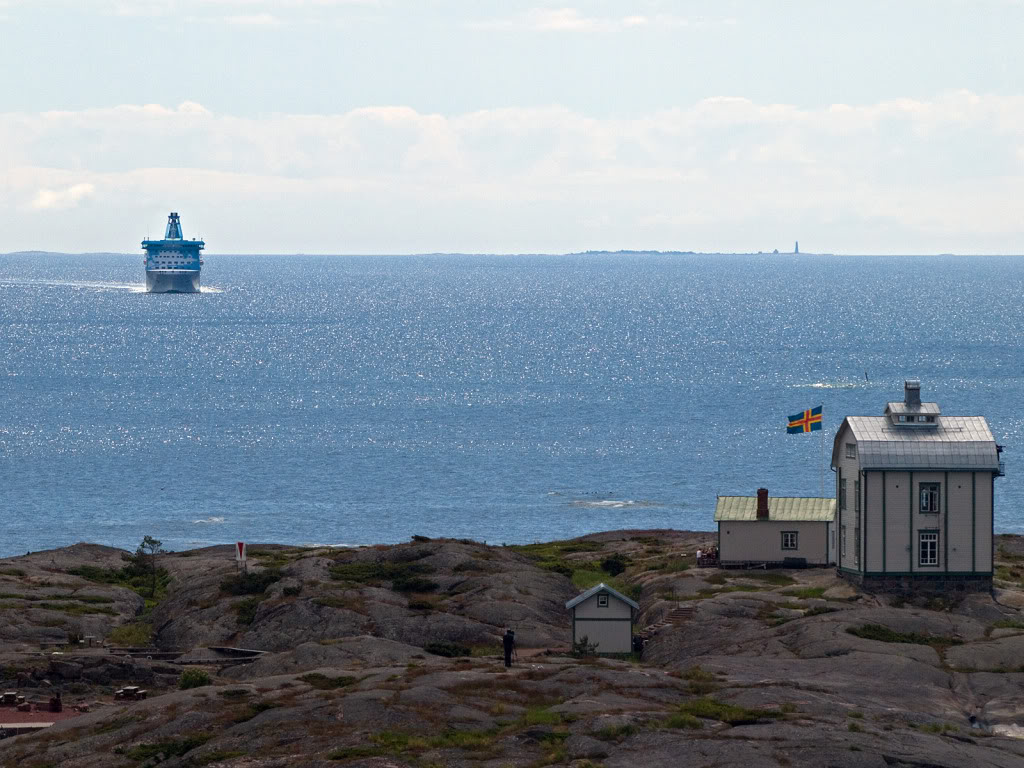
Mariehamn, Åland Islands
Åland Islands, an archipelago in the Baltic Sea and autonomous Swedish-speaking region of Finland, celebrates annually on June 9 Autonomy Day, the day when the first plenary session of Åland's parliament was held in 1922. Join Munduslingua on a trip to Åland Islands to explore the archipelago and have a taste of its activities all year round.
The Åland Islands form in the Baltic Sea one of the world's largest archipelagos. With its 6,500 islands, many of which are inhabited, the Swedish-speaking autonomous region of Finland has always new ways to impress its visitors. Whether in winter, when you can sometimes ice-skate all around Mariehamn, or summer, when people head to the beach, there are always different activities to do on the islands.
Åland is known for its extensive area and unspoiled scenery even during July when it is high season on the islands. Apart from the summer, the rest of the year is relatively a time of total stillness, which is ideal for rest and relaxation.
During summer visitors can enjoy long days of sunlight which can span in midsummer, typically between June 21 and June 24, to almost 19 hours. At this time of the year the sun typically rises at 3:30 am and sets at about 10 pm. The winter, although it carries with it very short days, is known for its snow that enigmatically lights up the landscape.
Activities on the island are diverse and for all types of persons. If you enjoy sports, you might want to hike through Åland's beautiful woods and extensive meadows, cycle along countless paths while enjoying the landscape, surf on the waves of idyllic beaches, dive to a well-preserved wreck and even kayak around the islands. Kayaking alone offers one of the best ways to discover the archipelago.
In addition Mariehamn, Åland's capital city, is the center of cultural activities for those who enjoy a more cultural holiday. Listen to live music in the many bars, restaurants and cafés of the town, watch plays, visit art exhibitions and be part of Åland's many festivals that take place all year long. Moreover Åland cuisine offers its visitors a wide variety of local fresh produce. Fish dishes are one of the islands' speciality with rich black bread, staple traditional pancakes with their classical accompaniments prune purée and whipped cream, being as famous. Other delicacies include ripe and creamy cheeses, Stallhagen beer, products made with apple or sea-buckthorn (the berries of this shrub), and the Ålanders' "hemvete" bread.
The Åland Islands form in the Baltic Sea one of the world's largest archipelagos. With its 6,500 islands, many of which are inhabited, the Swedish-speaking autonomous region of Finland has always new ways to impress its visitors. Whether in winter, when you can sometimes ice-skate all around Mariehamn, or summer, when people head to the beach, there are always different activities to do on the islands.
Åland is known for its extensive area and unspoiled scenery even during July when it is high season on the islands. Apart from the summer, the rest of the year is relatively a time of total stillness, which is ideal for rest and relaxation.
During summer visitors can enjoy long days of sunlight which can span in midsummer, typically between June 21 and June 24, to almost 19 hours. At this time of the year the sun typically rises at 3:30 am and sets at about 10 pm. The winter, although it carries with it very short days, is known for its snow that enigmatically lights up the landscape.
Activities on the island are diverse and for all types of persons. If you enjoy sports, you might want to hike through Åland's beautiful woods and extensive meadows, cycle along countless paths while enjoying the landscape, surf on the waves of idyllic beaches, dive to a well-preserved wreck and even kayak around the islands. Kayaking alone offers one of the best ways to discover the archipelago.
In addition Mariehamn, Åland's capital city, is the center of cultural activities for those who enjoy a more cultural holiday. Listen to live music in the many bars, restaurants and cafés of the town, watch plays, visit art exhibitions and be part of Åland's many festivals that take place all year long. Moreover Åland cuisine offers its visitors a wide variety of local fresh produce. Fish dishes are one of the islands' speciality with rich black bread, staple traditional pancakes with their classical accompaniments prune purée and whipped cream, being as famous. Other delicacies include ripe and creamy cheeses, Stallhagen beer, products made with apple or sea-buckthorn (the berries of this shrub), and the Ålanders' "hemvete" bread.
The Åland experience
Bounty Day
Norfolk Island
June 8
June 8
On all the island
Local communities
Local communities
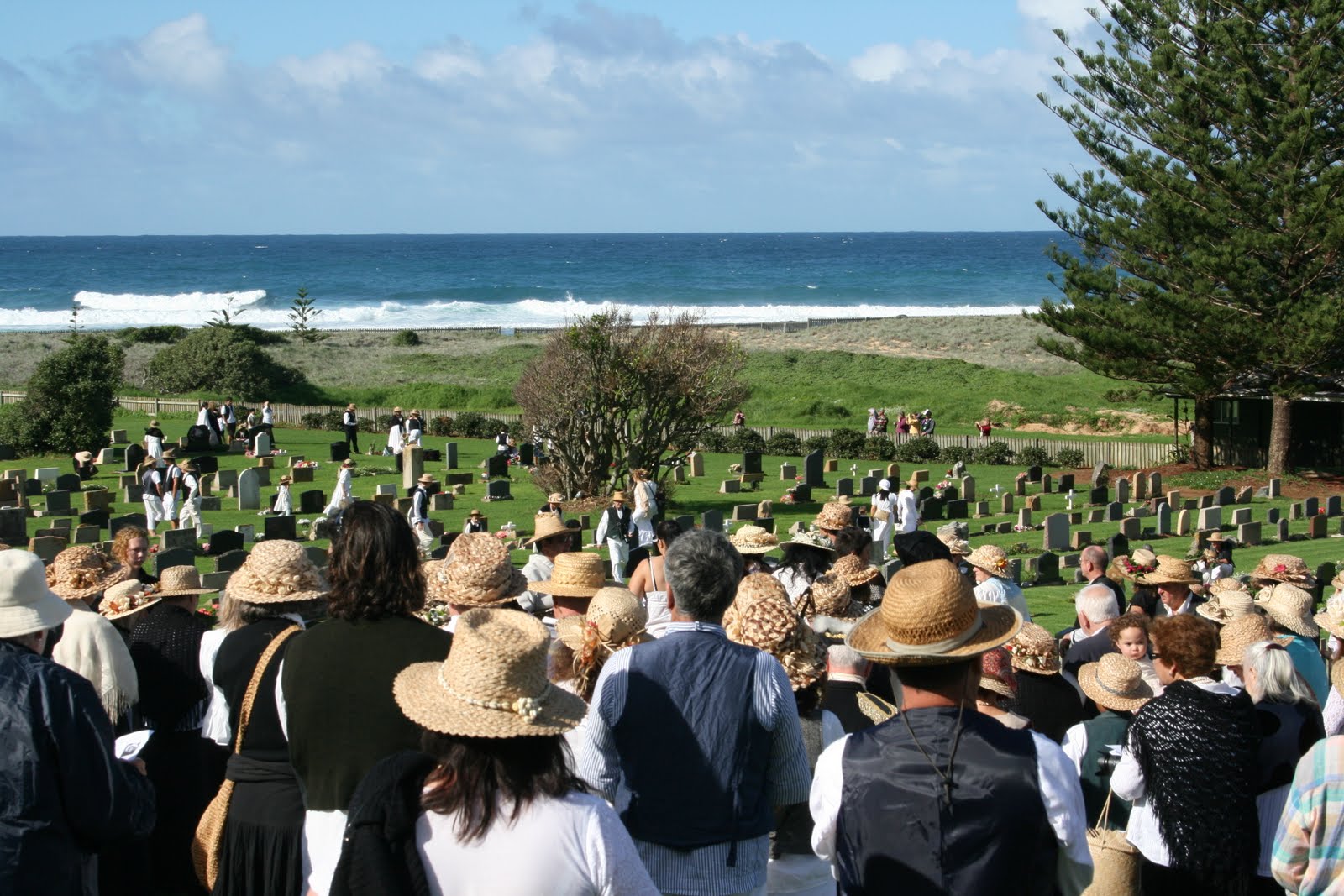
Bounty Day celebrations on Norfolk Island
June 8 is a national holiday on Norfolk Island to commemorate the arrival in 1856 of Pitcairn Islanders on Norfolk. "Bounty Day" as it is commonly known on the island, is a long-held holiday with events that search to preserve the history and traditions of the people of Norfolk Island. On this day Munduslingua sails to Norfolk Island to explore the history and the traditions of its people.
Bounty Day, as the holiday is known on Norfolk Island, has its roots in another historical event known as the "Mutiny on the Bounty." The "Bounty" refers to the British Royal Navy ship, the "HMS (His Majesty's Ship) Bounty," whereas "mutiny" is the refusal of the sailors to obey the orders of the ship's commander.
The "Mutiny on the Bounty" was an event on 28 April 1789 when the sailors aboard the HMS Bounty decided to stop following orders and took control of the ship. It is said that harsh treatment from the captain plus the idyllic life on the Pacific Island of Tahiti where the ship's crew had previously spent 5 months, led to the outbreak of mutiny some 1,300 miles west of Tahiti in the Pacific Ocean. After the mutiny, the Bounty eventually landed on Pitcairn Islands where the mutineers, along with their Tahitian wives and a group of Tahitian men and women, settled and burned the ship to prevent its detection on 23 January 1790.
As the years passed by the Pitcairn colony started to grow and the descendants of the mutineers eventually outgrew the ability of the Pitcairn Islands to support them. As a consequence of this the 193 descendants of the Bounty's crew wrote a letter to the British Government in request of a larger settlement. The request would be answered and Norfolk Island, a larger island that had previously been used as a penal colony, was granted by Queen Victoria to the Pitcairn Islanders in 1856. In May of that same year, the community of 193 Pitcairn Islanders began the travel across the ocean to Norfolk Island on board the Morayshire. The trip would end on June 8 when the travelers finally reached their new home.
Nowadays, Norfolk Island, located in the Pacific Ocean between Australia, New Zealand and New Caledonia, makes part of the Commonwealth of Australia but enjoys a high degree of selfgovernance.
Once a year during Bounty Day, the roughly 2300 residents of Norfolk Island re-enact the day when the Pitcairn Islanders first arrived on the island. On this day people dress in typical costumes of the 1800s as an act of recognition and perpetuation of the local culture. A procession departs the pier where the historical landing is re-enacted and marches to the cenotaph in remembrance to the first settlers. Here people lay wreaths. The events are followed by a visit to the cemetery where people sing together hymns.
The celebrations continue with a visit to Government House where the governor of Norfolk Island gives a speech. Next the people gather in groups to be judged for the best traditional dresses. The celebrations often conclude with a tradition reserved for the children where they roll down the grassy hill that surrounds Government House.
Bounty Day, as the holiday is known on Norfolk Island, has its roots in another historical event known as the "Mutiny on the Bounty." The "Bounty" refers to the British Royal Navy ship, the "HMS (His Majesty's Ship) Bounty," whereas "mutiny" is the refusal of the sailors to obey the orders of the ship's commander.
The "Mutiny on the Bounty" was an event on 28 April 1789 when the sailors aboard the HMS Bounty decided to stop following orders and took control of the ship. It is said that harsh treatment from the captain plus the idyllic life on the Pacific Island of Tahiti where the ship's crew had previously spent 5 months, led to the outbreak of mutiny some 1,300 miles west of Tahiti in the Pacific Ocean. After the mutiny, the Bounty eventually landed on Pitcairn Islands where the mutineers, along with their Tahitian wives and a group of Tahitian men and women, settled and burned the ship to prevent its detection on 23 January 1790.
As the years passed by the Pitcairn colony started to grow and the descendants of the mutineers eventually outgrew the ability of the Pitcairn Islands to support them. As a consequence of this the 193 descendants of the Bounty's crew wrote a letter to the British Government in request of a larger settlement. The request would be answered and Norfolk Island, a larger island that had previously been used as a penal colony, was granted by Queen Victoria to the Pitcairn Islanders in 1856. In May of that same year, the community of 193 Pitcairn Islanders began the travel across the ocean to Norfolk Island on board the Morayshire. The trip would end on June 8 when the travelers finally reached their new home.
Nowadays, Norfolk Island, located in the Pacific Ocean between Australia, New Zealand and New Caledonia, makes part of the Commonwealth of Australia but enjoys a high degree of selfgovernance.
Once a year during Bounty Day, the roughly 2300 residents of Norfolk Island re-enact the day when the Pitcairn Islanders first arrived on the island. On this day people dress in typical costumes of the 1800s as an act of recognition and perpetuation of the local culture. A procession departs the pier where the historical landing is re-enacted and marches to the cenotaph in remembrance to the first settlers. Here people lay wreaths. The events are followed by a visit to the cemetery where people sing together hymns.
The celebrations continue with a visit to Government House where the governor of Norfolk Island gives a speech. Next the people gather in groups to be judged for the best traditional dresses. The celebrations often conclude with a tradition reserved for the children where they roll down the grassy hill that surrounds Government House.
Bounty Day on Norfolk Island
South Korea's Memorial Day
South Korea
June 6
June 6
Nationwide
Local communities
Local communities
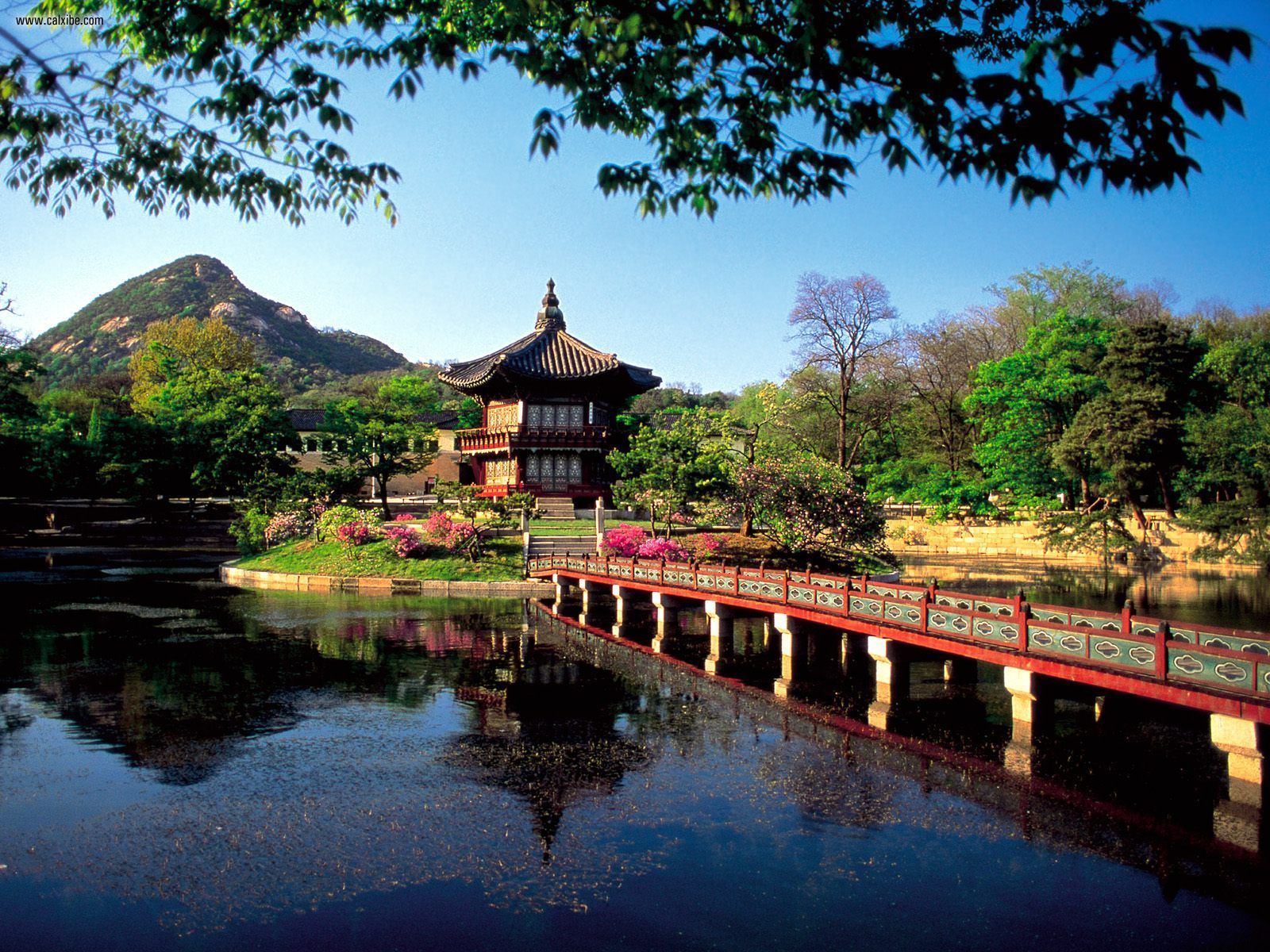
Hyangwonjeong Pavilion Lake, Seoul, South Korea
Many Korean men and women died during the Korean War (25 June 1950 – 27 July 1953) and other significant wars and battles of the past. June 6, Memorial Day in South Korea (Korean: 현충일 (顯忠日), Hyeonchung-il), is a day to remember these fallen men and women as well as the soldiers who perished while in service. Since 1956, South Koreans pay tribute to their men and women with a ceremony held in the National Cemetery in Seoul.
In addition a siren is sound at 10 am all over the country followed by 10 minutes of silence and prayers. The Korean flag is flown at half-staff on this day as a symbol of respect and mourning. On June 6 Munduslingua explores Seoul, the capital of South Korea, and shows you the many wonders of this modern and exciting city.
South Korea is a country in East Asia that forms the southern part of the Korean Peninsula. Its neighbors are North Korea to the north, China to the west, Japan to the east and the Korea Strait to the south. South Korea is known for successfully having merged its impressive history and traditions with the technology of the modern world.
Seoul, South Korea's capital city is a trendy, exciting and creative blend of the modern with the ancient. Surrounded by mountains and protected by the Han River, Seoul displays a high number of skyscrapers and temples, all standing in harmony with each other, and remembering the visitor of the Yin-Yang balance so essential in Korean life.
The historical architecture of the city is widespread and rich. From 5 Grand Palace compounds built by the Joseon dynasty (1392-1897), Changdeokgung (창덕궁, 昌德宮), the "Palace of Prospering Virtue," is a complex palace that blends in perfect balance the architecture of the buildings with the nature of its surroundings. Changdeokgung Palace was added in 1997 to the UNESCO list of World Heritage Sites for being an "outstanding example of Far Eastern palace architecture and garden design."
The remaining four palaces, Hanggyeonggung, Deoksugung, Gyeongbokgung and Gyeonghuigung, constitute also an important part of the city's cultural and historical heritage. From these, Gyeongbokgung Palace or the "Palace Greatly Blessed by Heaven," served during the Joseon dynasty as the main palace to all the 5 Grand Palaces. During the first decade of the new millennium, this palace has undergone a series of restorations to bring it back to its original splendor.
Culture is also another very important aspect of Seoul. The city counts with more than 100 museums with the National Museum of Korea being the most representative of them all. Other important museums are the National Folk Museum with replicas of historical objects used to recreate the folk history of the Korean people, and the Seoul and Ilmin Museums of Art.
The "Hi! Seoul Festival" also plays an important role in the cultural activities of the city each year. This festival is a seasonal cultural festival taking place 4 times a year since 2003. The festival is characterized by parades, concerts, the performance of traditional dances, fireworks and other events.
In addition a siren is sound at 10 am all over the country followed by 10 minutes of silence and prayers. The Korean flag is flown at half-staff on this day as a symbol of respect and mourning. On June 6 Munduslingua explores Seoul, the capital of South Korea, and shows you the many wonders of this modern and exciting city.
South Korea is a country in East Asia that forms the southern part of the Korean Peninsula. Its neighbors are North Korea to the north, China to the west, Japan to the east and the Korea Strait to the south. South Korea is known for successfully having merged its impressive history and traditions with the technology of the modern world.
Seoul, South Korea's capital city is a trendy, exciting and creative blend of the modern with the ancient. Surrounded by mountains and protected by the Han River, Seoul displays a high number of skyscrapers and temples, all standing in harmony with each other, and remembering the visitor of the Yin-Yang balance so essential in Korean life.
The historical architecture of the city is widespread and rich. From 5 Grand Palace compounds built by the Joseon dynasty (1392-1897), Changdeokgung (창덕궁, 昌德宮), the "Palace of Prospering Virtue," is a complex palace that blends in perfect balance the architecture of the buildings with the nature of its surroundings. Changdeokgung Palace was added in 1997 to the UNESCO list of World Heritage Sites for being an "outstanding example of Far Eastern palace architecture and garden design."
The remaining four palaces, Hanggyeonggung, Deoksugung, Gyeongbokgung and Gyeonghuigung, constitute also an important part of the city's cultural and historical heritage. From these, Gyeongbokgung Palace or the "Palace Greatly Blessed by Heaven," served during the Joseon dynasty as the main palace to all the 5 Grand Palaces. During the first decade of the new millennium, this palace has undergone a series of restorations to bring it back to its original splendor.
Culture is also another very important aspect of Seoul. The city counts with more than 100 museums with the National Museum of Korea being the most representative of them all. Other important museums are the National Folk Museum with replicas of historical objects used to recreate the folk history of the Korean people, and the Seoul and Ilmin Museums of Art.
The "Hi! Seoul Festival" also plays an important role in the cultural activities of the city each year. This festival is a seasonal cultural festival taking place 4 times a year since 2003. The festival is characterized by parades, concerts, the performance of traditional dances, fireworks and other events.
Experiencing Seoul, South Korea
Indian Arrival Day
Suriname
June 5
June 5
Nationwide
Local communities
Local communities
Indian Arrival Day Memorial
Indian Arrival Day is a date in Suriname's history to commemorate the events on June 5, 1873, when the first ship carrying indentured laborers from India arrived in Suriname. This ship was the first one to unload a batch of Indian workers from a series of many others that were to arrive in the years to come. Indian Arrival Day remembers how the Indian community landed in Suriname and recognizes their contribution in the development of the country.
Today's destination takes you to the Republic of Suriname in northern South America to learn about the Indian diaspora in Suriname and how their culture makes part of Suriname's diverse cultural heritage.
Indentured servitude (indenture: a type of contract in the past that forced a servant or apprentice to work for their employer for a particular period of time) is a term used to refer to the historical practice of employing workers for a fixed period of time that typically went from three to seven years. Indentured laborers left their countries of origin and went to areas where work opportunities were more likely. The laborers were mostly poor young men and women under the age of 21 who were not paid cash during the time of contract, but rather given in exchange transportation, food, clothing, lodging and other necessities.
At first, the destination of most indentured laborers was the Americas (other former colonies following them). This system offered young workers from places where the job market was overcrowded (Europe, India, Indonesia and others) a chance to travel to other areas of the world where they would often begin a new life. Many indentured laborers never came back to their places of origin, settling in their destinations and making there a living as farmers and farm wives.
In the case of Suriname, a country in northern South American and former Dutch colony, indentured servitude made its first steps with the Indian community in 1873. On June 5 of that year, the first ship carrying Indian young workers arrived in Suriname with many others ships to come in the following years. Some indentured laborers settled in Suriname and made their homes away from their relatives in India. However, life in Suriname was not easy. Daily work often meant a great deal of sacrifices from which physical abuse, humiliation and prohibition to speak their own language was a common scenario. That is why Indian Arrival Day also remembers the hardships and sacrifices Indian laborers had to face.
Despite all these difficulties, the Indian community in Suriname managed to hold on to their language and culture. At the beginning most laborers became farmers and kitchen gardeners. As time passed by many became traders and through education and sophistication one encounters today professionals of every branch in Suriname's Indian Diaspora. With their work and dedication, the Indian community was able to successfully progress beside other immigrant and local communities and has contributed importantly to the social, economic and political development of Suriname.
Nowadays Suriname is home to a variety of indigenous Amerindian tribes, Maroon tribes (tribes originating from slaves in the Americas who ran away and formed independent settlements), Creoles (people of mixed European and African ethnic groups), Indians, Javanese, Chinese, Europeans and many other cultures, making of Suriname a country with a unique multicultural society.
Munduslingua ends this destination by inviting you to watch a video on Suriname, a country of multiculturalism in South America, to learn more about its diverse cultural heritage and witness the unforgettable experiences that await you when visiting the country.
Today's destination takes you to the Republic of Suriname in northern South America to learn about the Indian diaspora in Suriname and how their culture makes part of Suriname's diverse cultural heritage.
Indentured servitude (indenture: a type of contract in the past that forced a servant or apprentice to work for their employer for a particular period of time) is a term used to refer to the historical practice of employing workers for a fixed period of time that typically went from three to seven years. Indentured laborers left their countries of origin and went to areas where work opportunities were more likely. The laborers were mostly poor young men and women under the age of 21 who were not paid cash during the time of contract, but rather given in exchange transportation, food, clothing, lodging and other necessities.
At first, the destination of most indentured laborers was the Americas (other former colonies following them). This system offered young workers from places where the job market was overcrowded (Europe, India, Indonesia and others) a chance to travel to other areas of the world where they would often begin a new life. Many indentured laborers never came back to their places of origin, settling in their destinations and making there a living as farmers and farm wives.
In the case of Suriname, a country in northern South American and former Dutch colony, indentured servitude made its first steps with the Indian community in 1873. On June 5 of that year, the first ship carrying Indian young workers arrived in Suriname with many others ships to come in the following years. Some indentured laborers settled in Suriname and made their homes away from their relatives in India. However, life in Suriname was not easy. Daily work often meant a great deal of sacrifices from which physical abuse, humiliation and prohibition to speak their own language was a common scenario. That is why Indian Arrival Day also remembers the hardships and sacrifices Indian laborers had to face.
Despite all these difficulties, the Indian community in Suriname managed to hold on to their language and culture. At the beginning most laborers became farmers and kitchen gardeners. As time passed by many became traders and through education and sophistication one encounters today professionals of every branch in Suriname's Indian Diaspora. With their work and dedication, the Indian community was able to successfully progress beside other immigrant and local communities and has contributed importantly to the social, economic and political development of Suriname.
Nowadays Suriname is home to a variety of indigenous Amerindian tribes, Maroon tribes (tribes originating from slaves in the Americas who ran away and formed independent settlements), Creoles (people of mixed European and African ethnic groups), Indians, Javanese, Chinese, Europeans and many other cultures, making of Suriname a country with a unique multicultural society.
Munduslingua ends this destination by inviting you to watch a video on Suriname, a country of multiculturalism in South America, to learn more about its diverse cultural heritage and witness the unforgettable experiences that await you when visiting the country.
A taste of Suriname
Emancipation Day and Tonga's Independence
Tonga
June 4
June 4
Nationwide
Local communities
Local communities
Matamaka Coral Gardens, Tonga
The Kingdom of Tonga (Tongan: Puleʻanga Fakatuʻi ʻo Tonga), a sovereign state and archipelago in the South Pacific Ocean, commemorates on June 4 two independent dates in its history. From one side we encounter Emancipation Day, the abolition of serfdom by King George Tupou I (c. 1797 - 1893) in 1862, from the other, the independence of Tonga from British protection in 1970. Although these are two separate events in Tongan history, they are both celebrated annually as Tonga's National Day. On this day Munduslingua
takes you on a trip to the Kingdom of Tonga to discover the land, its history and customs.
Tonga is an island nation located about 1,250 miles north of New Zealand in the South Pacific Ocean. Comprised of 176 islands some of which are still inhabited, the Kingdom of Tonga has a long history that dates back to its first colonizers 1500-1000 BCE. Due to the lack of a writing system by Tonga's first inhabitants, little is known of Tonga before European arrival. The first record of European contact with the Tongan people dates back to 1616 when the Dutch vessel Eendracht made a short visit to the islands to trade.
One of the smallest countries in the world both in terms of area and population, modern-day Tonga has a population of over 100,000, most of which are Polynesians or Europeans. The islands' immediate neighbors are Fiji to the west and Samoa to the northeast. The predominant languages are Tongan, an Austronesian language, and English.
The main economic activities in Tonga are fishing and agriculture where coconut, copra, banana, vanilla beans and pumpkin crops are at the head of the list. Pumpkins alone account for an important part of the islands' exports. Moreover tourism also contributes importantly to Tonga's economy, offering its tourists countless of beaches to enjoy and sporting activities such as sailing, snorkeling and diving.
Tonga has had a long line of monarchs that could well date back to thousands of years according to oral history. This makes of Tonga the only Pacific island nation never to have been formally colonized by a foreign power. As we said before, Tongans had no writing system and the first recorded king in this long-existing line of monarchs is King George Tupou I. He is said to have first abolished serfdom in Vava'u, one of the three island groups in Tonga (Tongatapu and Ha'apai being the other two), back in the 1830s.
In 1862 he took another extraordinary step by abolishing serfdom in the rest of Tonga and creating a parliamentary system of government. His newly established system gave every Tongan male, upon reaching the age of 16, the possibility to rent for life at a minimal cost a plot of bush land to grow his food and a village allotment for his home. It is for this reason that the first modern king of Tonga, King George Tupou I, is regarded as Tonga's national hero.
As of today's life in Tonga, many people still live lives that follow traditional customs. Traditional garments include the 'ta'ovala,' woven waist mats which are worn by both men and women for all formal occasions. Furthermore, earth ovens called 'Umus' still serve many Tongans to cook fish and vegetables and 'kava' drinking, a drink made with the roots of a plant by the same name and with sedative and anesthetic properties, is a ceremonial tradition still widely held.
Another aspect of Tongan culture one still encounters today is bone and wood carving as well as basket making and fine weaving. This and many other aspects of Tongan culture make of the island nation a paradise for travelers who expect a direct contact with the local culture and people and to enjoy the exquisite beaches of the Pacific.
Tonga is an island nation located about 1,250 miles north of New Zealand in the South Pacific Ocean. Comprised of 176 islands some of which are still inhabited, the Kingdom of Tonga has a long history that dates back to its first colonizers 1500-1000 BCE. Due to the lack of a writing system by Tonga's first inhabitants, little is known of Tonga before European arrival. The first record of European contact with the Tongan people dates back to 1616 when the Dutch vessel Eendracht made a short visit to the islands to trade.
One of the smallest countries in the world both in terms of area and population, modern-day Tonga has a population of over 100,000, most of which are Polynesians or Europeans. The islands' immediate neighbors are Fiji to the west and Samoa to the northeast. The predominant languages are Tongan, an Austronesian language, and English.
The main economic activities in Tonga are fishing and agriculture where coconut, copra, banana, vanilla beans and pumpkin crops are at the head of the list. Pumpkins alone account for an important part of the islands' exports. Moreover tourism also contributes importantly to Tonga's economy, offering its tourists countless of beaches to enjoy and sporting activities such as sailing, snorkeling and diving.
Tonga has had a long line of monarchs that could well date back to thousands of years according to oral history. This makes of Tonga the only Pacific island nation never to have been formally colonized by a foreign power. As we said before, Tongans had no writing system and the first recorded king in this long-existing line of monarchs is King George Tupou I. He is said to have first abolished serfdom in Vava'u, one of the three island groups in Tonga (Tongatapu and Ha'apai being the other two), back in the 1830s.
In 1862 he took another extraordinary step by abolishing serfdom in the rest of Tonga and creating a parliamentary system of government. His newly established system gave every Tongan male, upon reaching the age of 16, the possibility to rent for life at a minimal cost a plot of bush land to grow his food and a village allotment for his home. It is for this reason that the first modern king of Tonga, King George Tupou I, is regarded as Tonga's national hero.
As of today's life in Tonga, many people still live lives that follow traditional customs. Traditional garments include the 'ta'ovala,' woven waist mats which are worn by both men and women for all formal occasions. Furthermore, earth ovens called 'Umus' still serve many Tongans to cook fish and vegetables and 'kava' drinking, a drink made with the roots of a plant by the same name and with sedative and anesthetic properties, is a ceremonial tradition still widely held.
Another aspect of Tongan culture one still encounters today is bone and wood carving as well as basket making and fine weaving. This and many other aspects of Tongan culture make of the island nation a paradise for travelers who expect a direct contact with the local culture and people and to enjoy the exquisite beaches of the Pacific.
The Beautiful Kingdom of Tonga
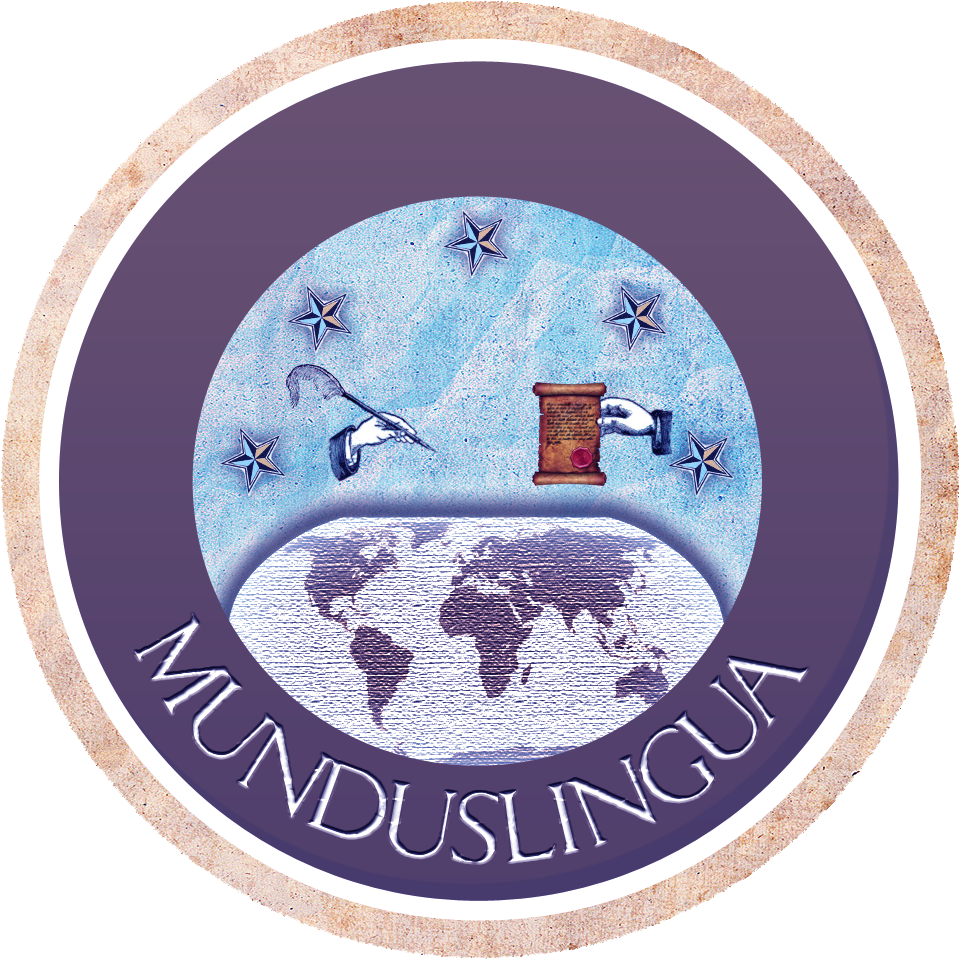

Choose your favorite channel below

Subscribe to our feeds
Read about cultural events and news in the world.
Read about cultural events and news in the world.
Enjoy our magazine on Flipboard
Best to enjoy from your mobile phone or tablet.
Best to enjoy from your mobile phone or tablet.
Enjoy our iTunes podcasts
Best for those who prefer audio.
Best for those who prefer audio.
Follow us on Twitter
Best for those who prefer Twitter.
Best for those who prefer Twitter.
Photo sources
June 4: Matamaka GPS Coral Garden, Tonga
June 5: Statue commemorating Indian Arrival Day
June 6: Hyangwonjeong Pavilion Lake, Seoul, South Korea
June 8: Bounty Day, Norfolk Island
June 9: Mariehamn, Åland Islands
June 20: Massawa, Eritrea
June 21: Corner of rue Saint Séverin and rue Saint Jacques during La Fête de la Musique in Paris
June 22: Dances & Music Concert - National Dance Ensemble of Azerbaijan
June 25: Gorongosa National Park, Mozambique
June 26: Emerald Buddha, Bangkok, Thailand
June 27: Ouro Preto, Minas Gerais State, Brazil
June 28: Isla del Sol, Lake Titicaca, Bolivia
June 29: Aldabra Giant Tortoise, Curieuse Island, Seychelles
Background: Panorama of Baku, Azerbaijan
June 5: Statue commemorating Indian Arrival Day
June 6: Hyangwonjeong Pavilion Lake, Seoul, South Korea
June 8: Bounty Day, Norfolk Island
June 9: Mariehamn, Åland Islands
June 20: Massawa, Eritrea
June 21: Corner of rue Saint Séverin and rue Saint Jacques during La Fête de la Musique in Paris
June 22: Dances & Music Concert - National Dance Ensemble of Azerbaijan
June 25: Gorongosa National Park, Mozambique
June 26: Emerald Buddha, Bangkok, Thailand
June 27: Ouro Preto, Minas Gerais State, Brazil
June 28: Isla del Sol, Lake Titicaca, Bolivia
June 29: Aldabra Giant Tortoise, Curieuse Island, Seychelles
Background: Panorama of Baku, Azerbaijan



